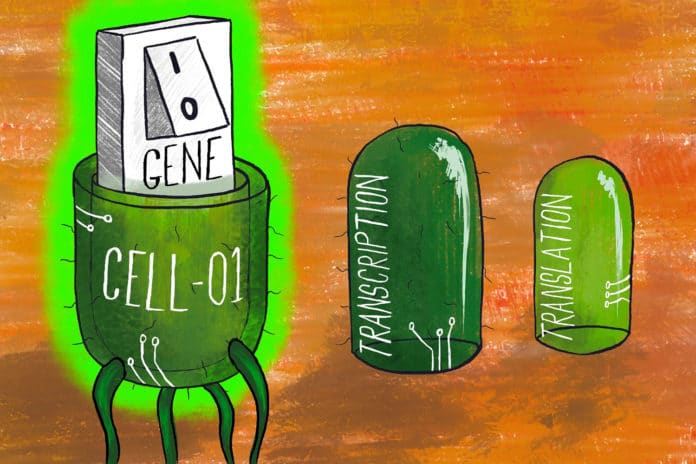When it comes to engineering biological systems, bioengineers need to control inducible gene expression strictly. In such cases, leaky protein production must be avoided but without affecting the achievable range of expression.
To make this possible, bioengineers must control when specific sets of genes are turned on and off to allow for careful regulation of the biochemical processes involved.
Turning the genes on and off sounds simple, but performing it on a living cell is a challenging task. Every cell is slightly different, and the processes involved are not 100 percent reliable.
To address this problem, scientists from the University of Bristol took inspiration from nature, where multiple processes simultaneously control the critical process.
In their study, scientists have shown how to simultaneously harness multiple forms of regulation in living cells by ensuring it only comes on precisely when required.
They simultaneously regulated transcription and translation and demonstrated how an inducible system’s basal expression could be reduced, with little impact on the maximum expression rate. Using this approach, they created several stringent expression systems displaying various changes in their output after induction.
They have also shown how multi-level regulation can suppress transcriptional noise and create digital-like switches between ‘on’ and ‘off’ states.
The team showed that using this type of multi-level regulation could create some of the most high-performance switches for gene expression built to date.
Professor Claire Grierson, co-author and Head of the School of Biological Sciences at Bristol, added: “What was wonderful about this project was how well it worked to harness two of the core processes present in every cell and underpinning all of life – transcription, and translation.”
Dr. Thomas Gorochowski, senior author and a Royal Society University Research Fellow at Bristol, said: “When we engineer microbes, we often try to simplify our systems as much as possible, thinking we’ll have better control over what is happening. But what we’ve shown is that embracing some of the inherent complexity of biology might be the key to fully unlocking its potential for the high-precision biotechnologies of tomorrow.”
Journal Reference:
- Greco, F.V., Pandi, A., Erb, T.J., et al. Harnessing the central dogma for stringent multi-level control of gene expression. Nat Commun 12, 1738 (2021). DOI: 10.1038/s41467-021-21995-7
